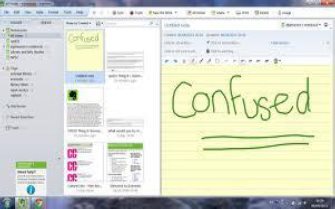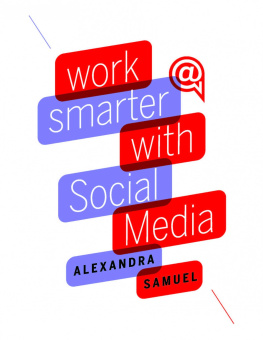
Table of Contents
If you want to maximize productivity, free your mental space of things to remember and store humungous data in a single storage area, Evernote is the best platform to have. Users say that the app is incredibly useful and can be learned in a matter of hours.
Evernotes brilliance shows up once a user uses it as his default webclip/bookmark, recipe box, app, repository of all reference materials, and so on. Youll feel its great to have all information neatly indexed and easy to search across all system platforms.
The discussion here is meant to introduce you to Evernote. Youd first feel overwhelmed with the details but with helpful guidance youll enjoy going through the learning curve and incorporating it to your Getting Things Done (GTD) app.
The learning task can be done in a matter of hours, but if you give it more of a focus, it will take only one hour to master, so lets start.
This exploration is for those who, for some reason of their own, have not yet taken advantage of the Getting Things Done system. The system is designed to increase peoples productivity in the office and in their personal lives. It is a method of managing ones time, a method that is also called as the GTD method.

The method is based on the assumption that to-do smaller tasks and bigger things like projects can be moved out of the mind to be recorded externally into notes. This allows one to break these tasks and see them as more actionable work pieces.
The method benefits mainly by freeing the user of the need to recall details of tasks and allowing them to focus on doing actions on the tasks at hand.
David Allen, author of the GTD system, believes that prioritizing tasks play a major role in the management of time. Allen developed the system with the belief that implementing perspective and control is the ultimate key to maximizing productivity. He constructed a process of workflow that makes it possible for anyone to gain control over commitments and tasks.
To improve on the area of perspective, he built a system that allows one to focus on six horizons or levels of doing things.
This horizon system is based on the idea of an airplane taking off from the ground. The first focus is compared to the runway level with the sixth or last level compared to the air level of 50,000 feet or more. As observers have noted, this Allen system is contrary to the theories that emphasize goal-setting should be of the top-down type.
For Allen, it is the opposite way that is more productive. He theorizes that it is harder for individuals to fix their eyes on big goals if the smaller tasks leading particular to the big goals are not sufficiently controlled. For him, there is a need to define and clarify the normal workday and freeing up space in the memory for one to be able to move up to the ladder or the levels of focus.
GTD, in particular, operates to improve ones ability to store, track and retrieve details and information. Allen thinks that people experience mental blocks because there is lack in planning in advance and in generating actions that can be undertaken later without requiring more planning. He further said that the reminding structure of our brain is not efficient in reminding us of the things that need to be done at the time and position where it is not impossible to do them.
With the GTD system in place and with it relying on outside memories, the brains reminding inefficiency is compensated and the reminders come when they are needed, a hypothesis that is expressed in the brain theories called extended mind and distributed cognition.

The GTD system allows a review of tasks that can be done on a weekly basis. This way, the user can have a better perspective of what to do next and what should be prioritized. In every review session, the user is expected to study the circumstances around the tasks and categorize these tasks for better handling. A user, for example, can categorize important meetings, calls to make, follow-up on supplies related to certain projects, and errands to do while in the supermarket under appropriate listings.
Let it be clear at this point that GTD is a time-management theory and as an applied theory, it is merely a time-management methodology. There is no such a thing as GTD software that has been developed by the author because his methodology assumes paper-note-taking as the primary method of recording data.
What we now have are technological systems and computer apps that claim to be using this methodology. Having said that, we can say that GTD is technologically neutral but the time-management ideas presented in the theory can be used in the development of technological systems related to time management.
Developers of Android, Windows 7, Blackberry, Ubuntu, Mac, Linux, IPad, Android and I Phone and others are competing with one another in terms of incorporating the GTD system for their clients to use.
Moreover, several task management applications are also implementing their brands of GTD such as the open-source task management tools that include wikiPad, TiddyWiki, Taskwarrior, EMacs Org-mode, Chandler, AND BasKet Note Pads.
On the other hand, we have the non-open-source or proprietary task management tools that include Wunderlist, NirvanaHQ, MyLifeOrganized, Toodledo, Todoist, Things, Remember the Milk, Priority Matrix, Pocket Informant, Organize-Pro, OmniFocus, Binfire, GTD Outlook Addin, Evernote and Trello.
With this sheer number of platforms to use, it wouldnt be difficult to incorporate a certain version of GTD system into your own life depending on what is readily available and usable to you and what kind of GTD system is most suited to you. To guide you on how to implement GTD, here is a step-by-step process which can be done only within just 7 days.
Remember, however, that most of the ideas presented in this section are representatives of David Allens major ideas. More comprehensive and more detailed descriptions of GTD processes can be read from the GTD authors book titled Getting Things Done: The Art of Stress-Free Productivity.
There is an art to collecting information or if you prefer, there is a science to it. Allen says that it is possible for the brain to be freed from having to store too much information. The drawback of having to keep remembering information is the brain is forced to waste energy just to hold on to the many data that need to be remembered. The brain is obliged to keep these memories or data fresh for as long as it can handle them.

So, sometimes, you feel like forcing yourself not to stop thinking about important details. That goes on and on for every single detail that must not be forgotten. That can be said to be an act of worrying and therefore can cause stress not only to the brain but also to the whole bodily system.
To liberate the brain from such a task, Allen suggests recording of information instead. As soon as the brain gets the signal that it is no longer responsible for the information, it lets go of it, stops using energy needlessly and gets ready to receive other information or prepares to do another task.
Next page




















